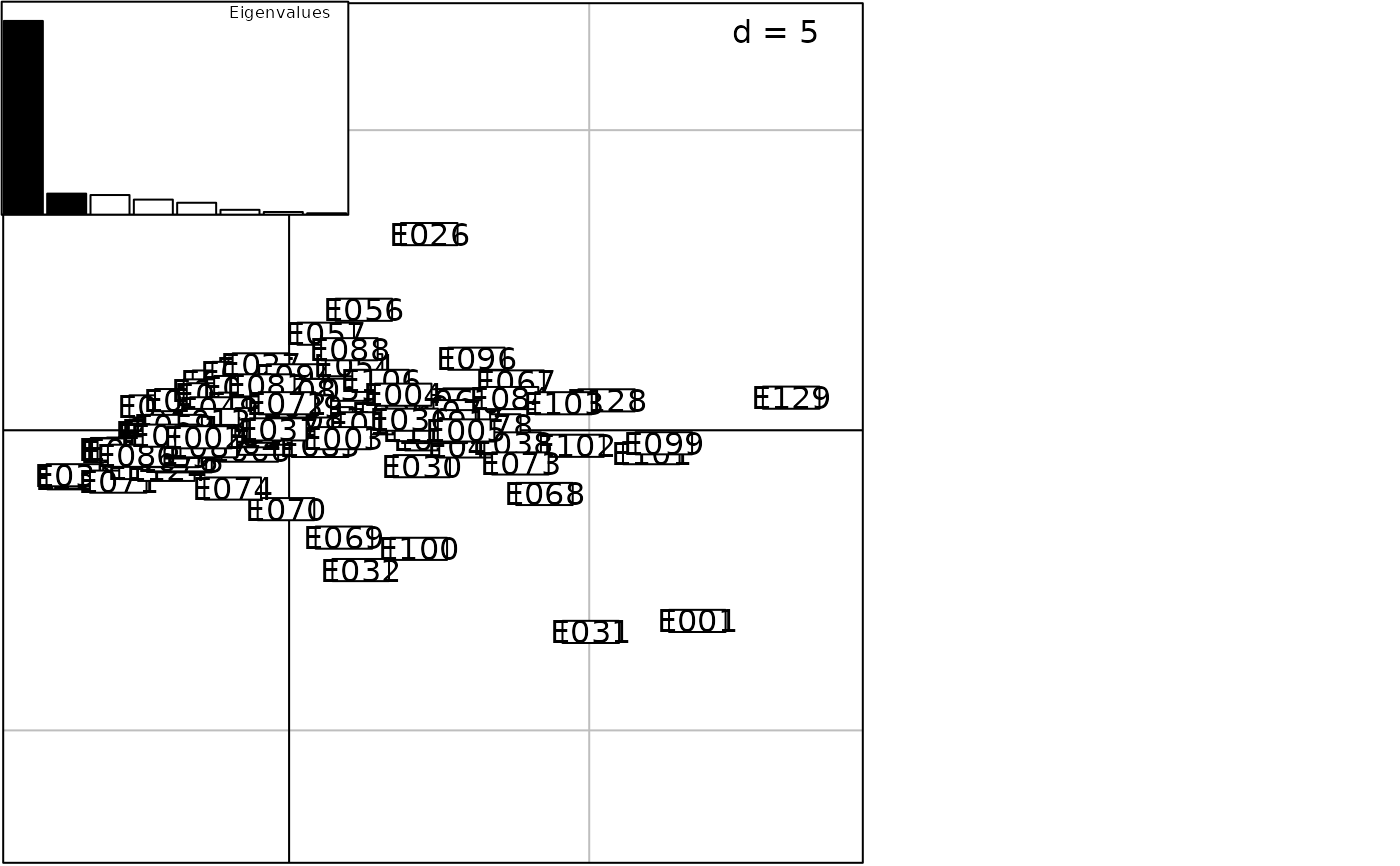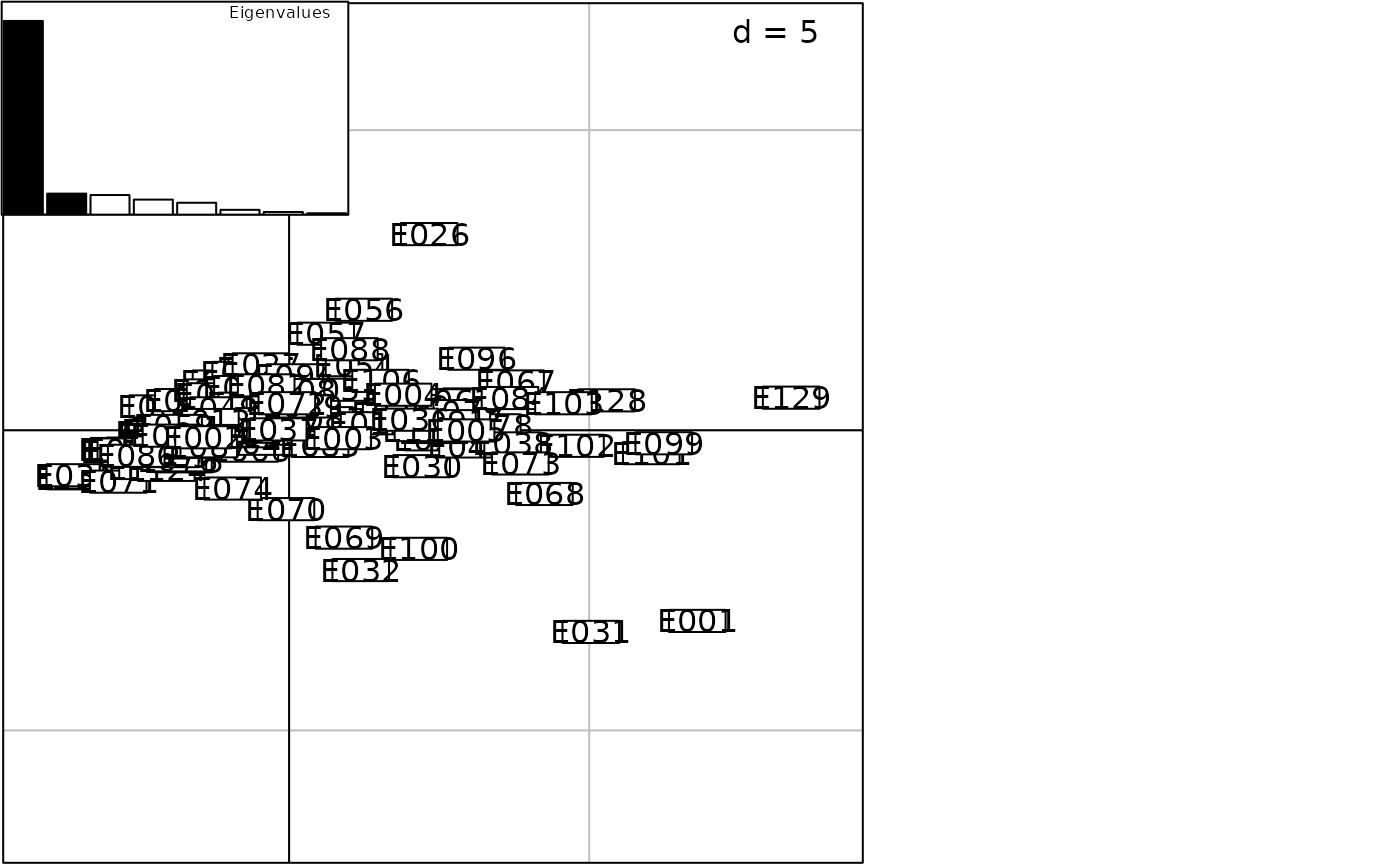Computation of Distance Matrices on Quantitative Variables
dist.quant.Rdcomputes on quantitative variables, some distance matrices as canonical, Joreskog and Mahalanobis.
Arguments
- df
a data frame containing only quantitative variables
- method
an integer between 1 and 3. If NULL the choice is made with a console message. See details
- diag
a logical value indicating whether the diagonal of the distance matrix should be printed by `print.dist'
- upper
a logical value indicating whether the upper triangle of the distance matrix should be printed by `print.dist'
- tol
used in case 3 of
methodas a tolerance threshold for null eigenvalues
Details
All the distances are of type \(d=\|x-y\|_A = \sqrt{(x-y)^{t}A(x-y)}\)
- 1 = Canonical
A = Identity
- 2 = Joreskog
\(A=\frac{1}{diag(cov)}\)
- 3 = Mahalanobis
A = inv(cov)
Author
Daniel Chessel
Stéphane Dray stephane.dray@univ-lyon1.fr
Examples
data(ecomor)
if(adegraphicsLoaded()) {
g1 <- scatter(dudi.pco(dist.quant(ecomor$morpho, 3), scan = FALSE), plot = FALSE)
g2 <- scatter(dudi.pco(dist.quant(ecomor$morpho, 2), scan = FALSE), plot = FALSE)
g3 <- scatter(dudi.pco(dist(scalewt(ecomor$morpho)), scan = FALSE), plot = FALSE)
g4 <- scatter(dudi.pco(dist.quant(ecomor$morpho, 1), scan = FALSE), plot = FALSE)
G <- ADEgS(list(g1, g2, g3, g4), layout = c(2, 2))
} else {
par(mfrow = c(2, 2))
scatter(dudi.pco(dist.quant(ecomor$morpho, 3), scan = FALSE))
scatter(dudi.pco(dist.quant(ecomor$morpho, 2), scan = FALSE))
scatter(dudi.pco(dist(scalewt(ecomor$morpho)), scan = FALSE))
scatter(dudi.pco(dist.quant(ecomor$morpho, 1), scan = FALSE))
par(mfrow = c(1, 1))
}



